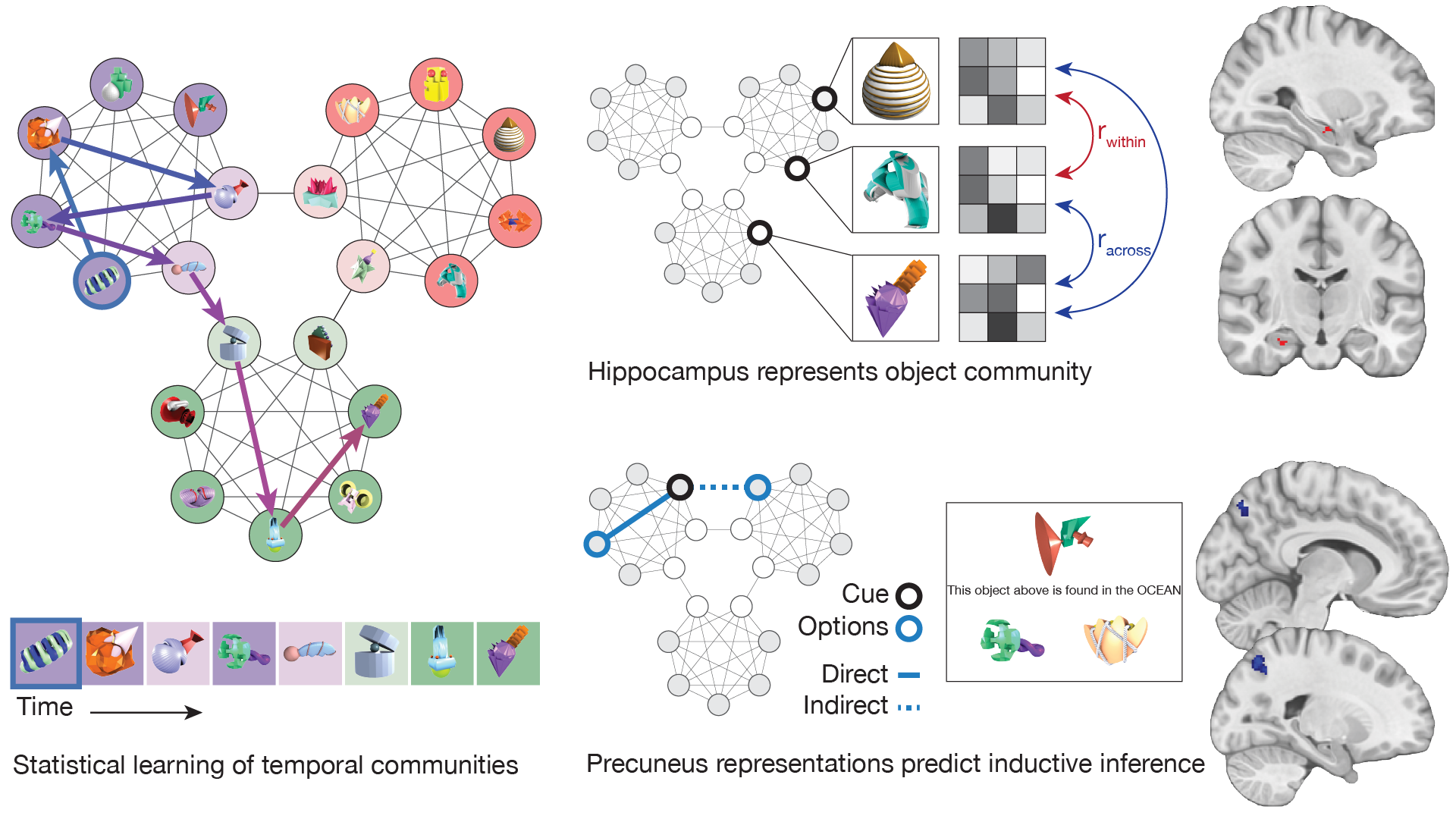Research
How is human knowledge organized in the brain to support reasoning?
Much research on human learning has focused on formation and retrieval of simple associations in memory. However, human intelligence also relies on a sophisticated ability to recognize common patterns and reason by analogy. Through computational modeling and neuroimaging, we examine how the brain represents existing knowledge and recognizes common patterns to facilitate reasoning.
Below are summaries and visual abstracts of some of the lab’s recent research. See the full papers for details. A full list of publications, with links to free access on PubMed for most papers, is available on the publications page.
Statistical learning in hippocampus may help discover implicit structure in the world
Hippocampus and precuneus activity patterns reflect an implicit community structure that relates objects and correlate with inference based on community (Pudhiyidath et al. 2022).

Cortical networks and hippocampus represent real-world knowledge of famous people and places
Using a model of semantic similarity based on Wikipedia articles, we found that overlapping but distinct networks reflect knowledge of people and places (Morton et al. 2021).

Memory reactivation simultaneously promotes formation of integrated and differentiated codes in hippocampus
Reactivation of related memories during learning promotes formation of integrated codes in CA1 and differentiated codes in CA2,3/DG, which predict inference (Molitor et al. 2021).


